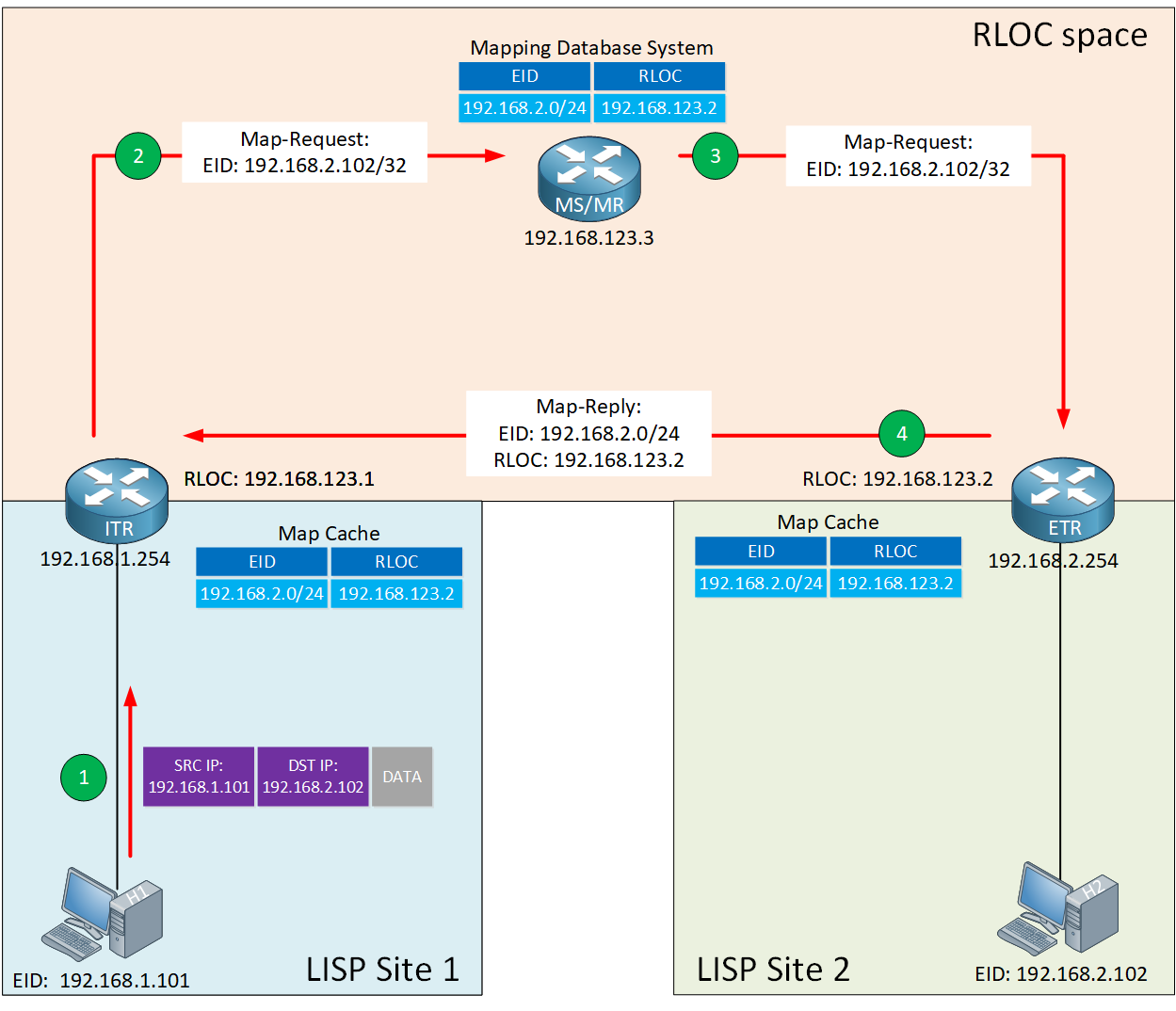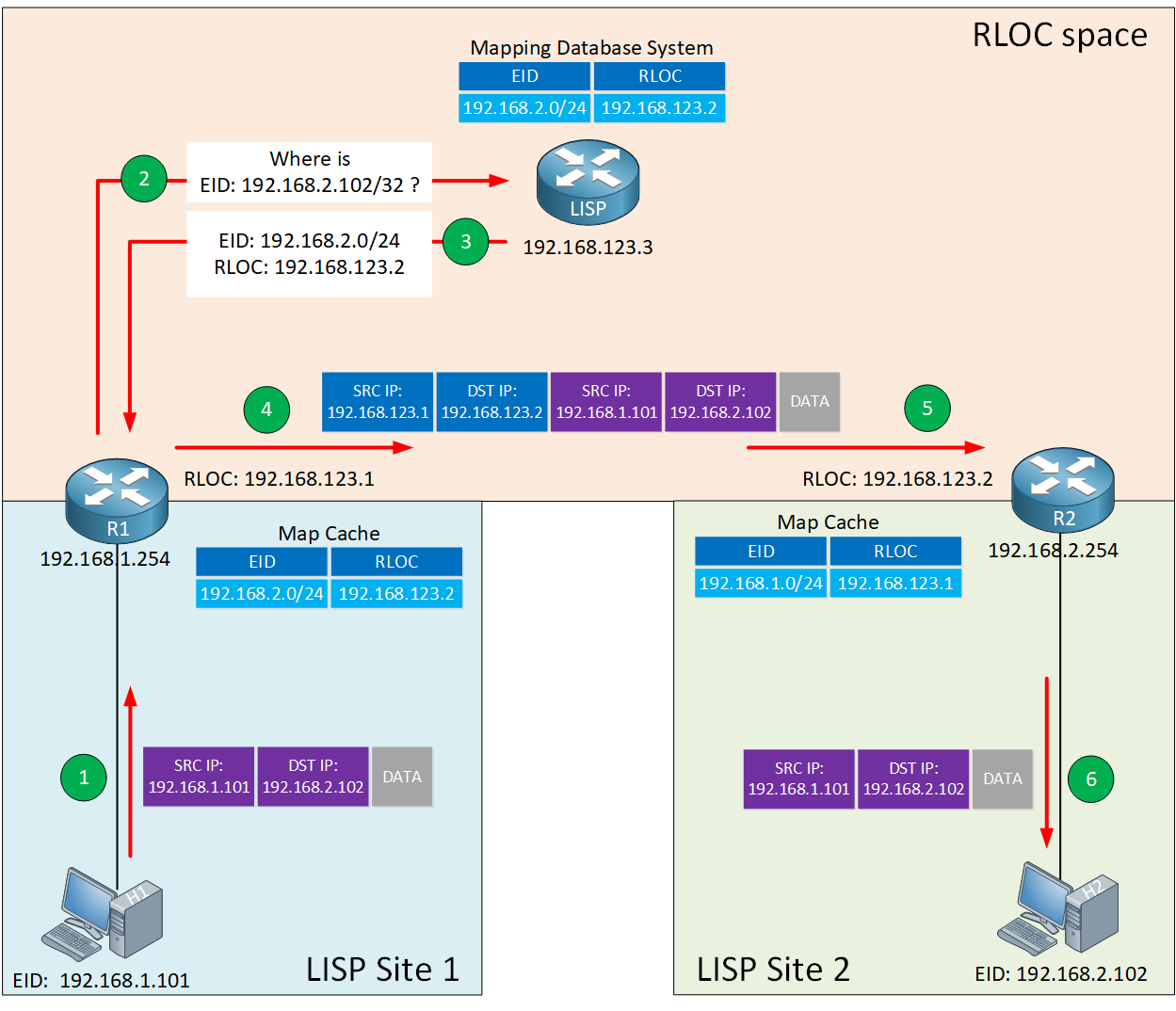LISP - map request and reply process
LISP is a network architecture and protocol that seeks to make Internet routing more scalable and flexible. A fundamental part of the operation of LISP is the method by which mapping requests and replies are made. The device that replies to the Map-Request depends upon the situation.
MS/MR doesn't have an answer
Refer to the following diagram:

When a packet is sent by a host in LISP site 1, it reaches the ITR. The ITR must determine if this packet is to be routed normally or if it should be routed via LISP. To determine this, it sends a Map-Request to the MS/MR. If the MS/MR doesn’t have sufficient information to know if the requested EID exists, then it will forward the request to a device that has more information about the EID being requested. This may be another MS/MR or the actual ETR that has the EID information.
Once the correct ETR is found, it is the ETR that sends the Map-Reply to the originating ITR.
MR/MS does have an answer
In the event that the local MR/MS does have sufficient information about the requested EID, it responds directly to the ITR, as shown in the following diagram:

Here we see R1, the ITR request information about the EID and the MR/MS (labeled LISP in the diagram) responds directly. Once this is done R1 can communicate via LISP with R2 which is the ETR.